Chess boxing coming to America?
Chess blog for latest chess news and chess trivia (c) Alexandra Kosteniuk, 2012
Hi everyone,
We found this nice story about chess boxing coming to America.
Hi everyone,
We found this nice story about chess boxing coming to America.
Standing eight, or is it checkmate?
Article by: SCOOBY AXSON , Columbia News Service
The unique European sport of chessboxing, which combines the cerebral board game with bouts of punching, is looking to score a foothold in the United States.
Article by: SCOOBY AXSON , Columbia News Service
The unique European sport of chessboxing, which combines the cerebral board game with bouts of punching, is looking to score a foothold in the United States.
Pick your poison: If you had a choice of how you lost a competitive game or sport, how would you prefer to get your brains bashed in? Literally or figuratively?
Mostly an overseas phenomenon, the cult sport of chessboxing is making its way to the United States. Matches start with two opponents seated at a table in the middle of a boxing ring, leaning over a chess board, dressed to fight, but without their gloves. After a four-minute round of chess, the table is removed, the opponents put on gloves and fight for three minutes. After that, it's back to chess, up to 11 rounds. There is a one-minute break between sports to allow the opponents to change gear.
 "For me, getting punched really focuses the chess. It's like doing math at the end of a gun," says Los Angeles Chessboxing Club founder Andrew McGregor. "You have to find a solution to what's on the board."
"For me, getting punched really focuses the chess. It's like doing math at the end of a gun," says Los Angeles Chessboxing Club founder Andrew McGregor. "You have to find a solution to what's on the board."
McGregor, 32, estimates that it takes about nine months of training to become a competent and successful chessboxer, and that the sport helps to sharpen survival skills and build a strong mental focus. He says he is the North American champ, although he admits there is no functioning regulatory body or commission that awards championships. Since its inception in January 2010, the L.A. Chessboxing Club and its members have wanted to create commercial appeal, with the hope that they can eventually offer prize money to combatants.
Chessboxing's roots trace back to 2003 in Germany, although the idea came from a French novel, "Froid Equateur" ("Cold Equator"). The book chronicled a chessboxing match that lasted more than four hours, inspiring the creation of the World Chess Boxing Organisation, based in Berlin, and created buzz after being featured on ESPN in 2006.
Matches are won during the chess portion by checkmate, exceeding the 12-minute chess time limit, or retirement of an opponent. Once opponents are back on their feet, a knockout or a referee's decision determines the winner. If the chess game ends in a stalemate, the opponent with the higher score in boxing wins. If there is an equal score, the chess opponent playing black wins.
"The adrenaline and sometimes the receiving of a heavy blow to the head means that you'll have to calm and re-center yourself a bit first before beginning the chess again," says Peter VanCouvering, 25, who works as a chemist when he isn't chessboxing.
Competitors are placed into light, middle and heavyweight divisions, but because there are so few chessboxers, fighters are sometimes mismatched in weight.
"It's also imperative that people with similar experience on the boxing side compete for safety's sake, as you don't want a mismatch from pugilistic experience because that drastically increases the risk of serious injury in the ring," says McGregor, whose ring nickname is the Fightin' Philanthropist.
McGregor is a photojournalist, owner of a nonprofit organization called the Tiziano Project, stands 6 foot 9 and weighs around 285 pounds. He says he spends most of his free time scouring the boardwalks, gyms and chess parks of Southern California looking for people willing to learn a new game.
He finds promoting the sport difficult because it's hard to find people with an interest in both activities. But he says that while chessboxing might not be universally known, it can become addictive for those who try it.
One contest was staged at a Venice, Calif., art gallery to raise money for his nonprofit, with the audience dressed in evening gowns and tuxedos. But not all matches are held in such luxurious circumstances. Matches have also been held in movie theaters and in a barren room with a concrete floor and walls, with about 100 half-drunk spectators.
VanCouvering is an experienced competitive chess player, but before his first chessboxing match he says he only had two or three hours of boxing training. His first opponent had at least 10 years of martial-arts experience. During the match, VanCouvering, who says he had a 40-pound advantage, dropped his opponent with a left hook to the kidney. But it was his chess skills that prevailed.
"My opponent had some chess experience and had good instincts, but couldn't keep up with me. I started breaking down his king's defenses and with a nice sacrifice, set up an unstoppable mating attack. In the fifth round (third round of chess), I finished him off," VanCouvering says. "He did catch me flat-footed with a triple jab to the head that had my head buzzing even an hour after the match was over. There was no prize money, but the cheering was nice."
McGregor, who learned about chessboxing while on a photo assignment in Europe, is doing everything he can to promote the sport. He is involved in setting up competitions and teaching classes with the goal of spreading the sport to the big cities of America. His next goal is to eventually cater to younger athletes and women.
From Alexandra Kosteniuk's
www.chessblog.com
Also see her personal blog at
www.chessqueen.com
 "For me, getting punched really focuses the chess. It's like doing math at the end of a gun," says Los Angeles Chessboxing Club founder Andrew McGregor. "You have to find a solution to what's on the board."
"For me, getting punched really focuses the chess. It's like doing math at the end of a gun," says Los Angeles Chessboxing Club founder Andrew McGregor. "You have to find a solution to what's on the board."McGregor, 32, estimates that it takes about nine months of training to become a competent and successful chessboxer, and that the sport helps to sharpen survival skills and build a strong mental focus. He says he is the North American champ, although he admits there is no functioning regulatory body or commission that awards championships. Since its inception in January 2010, the L.A. Chessboxing Club and its members have wanted to create commercial appeal, with the hope that they can eventually offer prize money to combatants.
Chessboxing's roots trace back to 2003 in Germany, although the idea came from a French novel, "Froid Equateur" ("Cold Equator"). The book chronicled a chessboxing match that lasted more than four hours, inspiring the creation of the World Chess Boxing Organisation, based in Berlin, and created buzz after being featured on ESPN in 2006.
Matches are won during the chess portion by checkmate, exceeding the 12-minute chess time limit, or retirement of an opponent. Once opponents are back on their feet, a knockout or a referee's decision determines the winner. If the chess game ends in a stalemate, the opponent with the higher score in boxing wins. If there is an equal score, the chess opponent playing black wins.
"The adrenaline and sometimes the receiving of a heavy blow to the head means that you'll have to calm and re-center yourself a bit first before beginning the chess again," says Peter VanCouvering, 25, who works as a chemist when he isn't chessboxing.
Competitors are placed into light, middle and heavyweight divisions, but because there are so few chessboxers, fighters are sometimes mismatched in weight.
"It's also imperative that people with similar experience on the boxing side compete for safety's sake, as you don't want a mismatch from pugilistic experience because that drastically increases the risk of serious injury in the ring," says McGregor, whose ring nickname is the Fightin' Philanthropist.
McGregor is a photojournalist, owner of a nonprofit organization called the Tiziano Project, stands 6 foot 9 and weighs around 285 pounds. He says he spends most of his free time scouring the boardwalks, gyms and chess parks of Southern California looking for people willing to learn a new game.
He finds promoting the sport difficult because it's hard to find people with an interest in both activities. But he says that while chessboxing might not be universally known, it can become addictive for those who try it.
One contest was staged at a Venice, Calif., art gallery to raise money for his nonprofit, with the audience dressed in evening gowns and tuxedos. But not all matches are held in such luxurious circumstances. Matches have also been held in movie theaters and in a barren room with a concrete floor and walls, with about 100 half-drunk spectators.
VanCouvering is an experienced competitive chess player, but before his first chessboxing match he says he only had two or three hours of boxing training. His first opponent had at least 10 years of martial-arts experience. During the match, VanCouvering, who says he had a 40-pound advantage, dropped his opponent with a left hook to the kidney. But it was his chess skills that prevailed.
"My opponent had some chess experience and had good instincts, but couldn't keep up with me. I started breaking down his king's defenses and with a nice sacrifice, set up an unstoppable mating attack. In the fifth round (third round of chess), I finished him off," VanCouvering says. "He did catch me flat-footed with a triple jab to the head that had my head buzzing even an hour after the match was over. There was no prize money, but the cheering was nice."
McGregor, who learned about chessboxing while on a photo assignment in Europe, is doing everything he can to promote the sport. He is involved in setting up competitions and teaching classes with the goal of spreading the sport to the big cities of America. His next goal is to eventually cater to younger athletes and women.
From Alexandra Kosteniuk's
www.chessblog.com
Also see her personal blog at
www.chessqueen.com
Labels: chess boxing









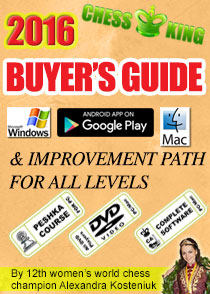


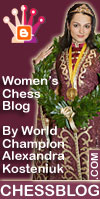





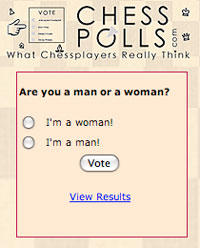
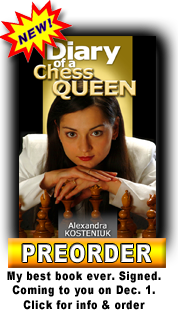










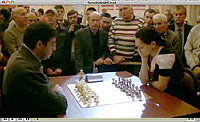
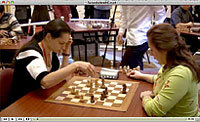
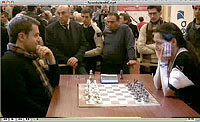
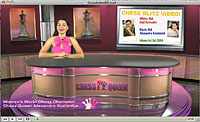
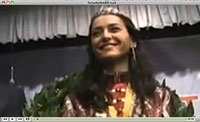
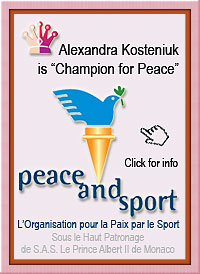
1 Comments:
At March 4, 2012 at 7:57 AM , Anonymous said...
Anonymous said...
If boxing is a sport then chess boxing is a sport if chess boxing is a sport then chess is a sport no?
Post a Comment
Note: Only a member of this blog may post a comment.
Subscribe to Post Comments [Atom]
<< Home